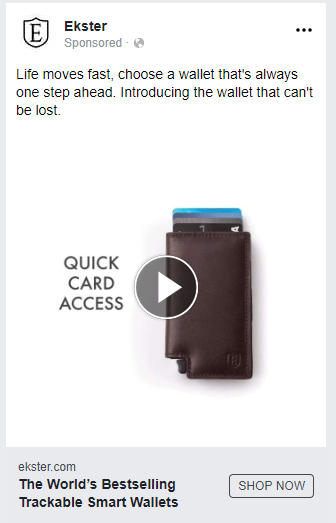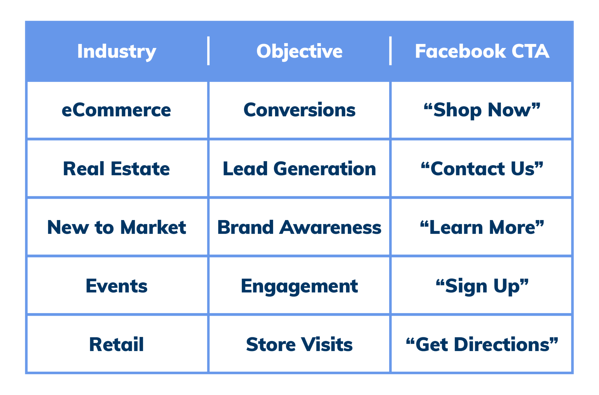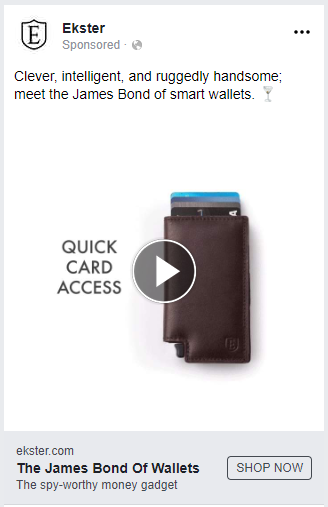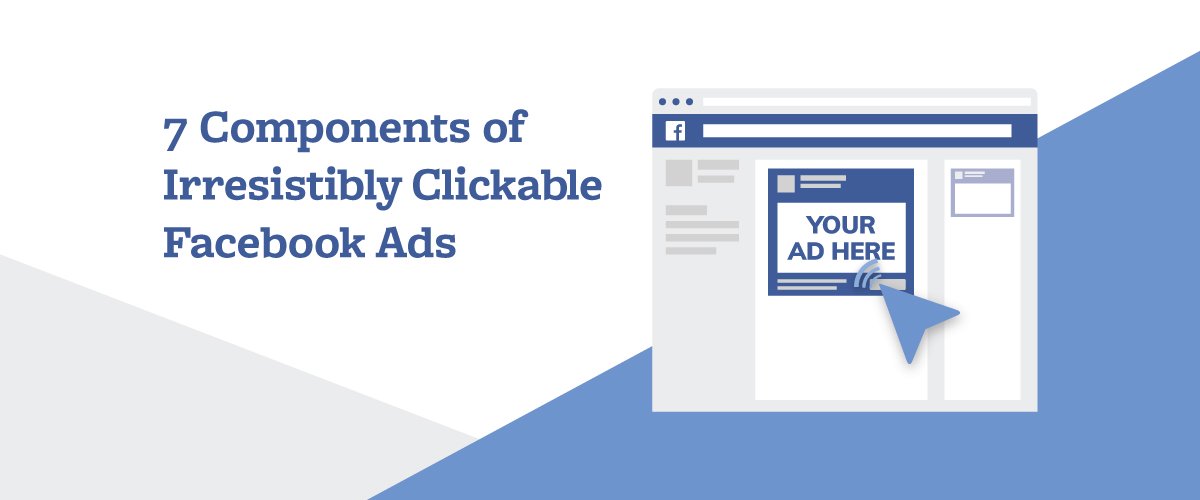Facebook is a social platform – but it’s not always an inclusive one. As advertisers, we are the outcasts of the feed, always one misguided post away from a “hide ad”. We want to fit in just as much as we want to stand out. Our intentions are obvious, so the way we present ourselves is crucial.
The key is to create ads that fit seamlessly into the feed while boldly standing out to the right people. We want to stop the endless scroll and steal our audience’s attention. But flashy headlines and stellar creatives only get you so far. Want to learn how to keep that precious attention and transform it into action?
In this post, we’ll be focusing on the most undervalued and underutilized component of Facebook ads. The skill that can create trust, build relationships, and foster loyalty. The craft that can act as a voice for your brand and friend to your audience. That’s right, we’re diving into the incredibly powerful influence of ad copy. Because, despite what you may think, people still read.
Follow these steps and watch as your audience clicks their way from prospect to customer.
1. Gain your audience’s trust
Social media may be bringing us together, but it’s not necessarily bringing us closer. One mistake you can make right off the bat is treating your ads as a one-sided interaction. Instead, treat them like a relationship. And the key to a good relationship? Trust.
Gaining your audience’s trust starts with authenticity. You know your brand better than anyone else, so make sure your brand voice comes across in your ads. This practice will serve you in a couple of ways:
- The more authentic your ad, the more your target audience will be able to relate; the more they relate, the more they engage. Make your clicks count by staying true to your brand voice.
- Your ad acts as a bridge between the Facebook platform and your landing page. So, if your bridge seems to be leading one way but directs them somewhere that feels foreign, they are likely to leave.
Creating a seamless transition between Facebook and your website will not only lead to better engagement but better user experience. When done right, metrics like time on site and page views will increase while bounce rates decrease.
Likewise, comments, reactions, and shares are all byproducts of an authentic ad – and in Facebook’s eyes that looks like a good relevance score in the making.
2. Be upfront with your audience
Ask yourself what message you want to relay through your ads.
Your ad space is valuable—and limited—so keep your Facebook ads concise. Focus on conveying one clear message to your audience. Narrowing down your message will also make writing your ads easier. You’ll be able to focus on your true message without getting hung up on any unimportant details or broad concepts.

No nonsense here! Ekster is straight to the point about their bestselling, trackable smart wallets.
To come up with your core message, write down one idea you want your audience to take away. Recent studies show that a consumer’s attention span is now less than an average goldfish. So, keep your messaging clean and concise for better results.
Stick with the golden rule of one message per ad and you’ll be able to hold your audience’s attention – at least for 8.25 seconds.
3. Tell your audience what to do
Whether you’re an e-commerce site looking for online sales or a real estate company in search of leads, clearly define your goal before you start writing. And once you know your goal, make sure your audience knows it too.
While your ad image/video has the biggest impact on drawing users in, your ad copy nudges them to “browse”, or “discover” your product. Curious shoppers can then engage with your website and enter your sales funnel without feeling pressured to buy.
Facebook also offers multiple Call to Action (CTA) buttons to tell your audience what to do next. If you’re not sure where to begin, use the following examples as inspiration to get started:

Don’t be afraid to add a more detailed CTA in the headline or ad text as well. Just make sure it isn’t too long and compliments the Facebook CTA you choose.
4. Bring your audience to life
You know your target demographic; how old they are, their hobbies, maybe ever their occupation. They live in a certain zip code or make a certain amount of money. These are the people that should want to buy what you’re selling.
But sometimes people on paper just aren’t the same as their 3-D counterparts. Rather than tie your audience to a list of facts, envision your audience as the living, breathing humans they are.

Create a persona that you can directly speak to. Putting a face to your audience can make all the difference when writing. Throughout this process, you’ll start thinking about the challenges they face, what motivates them, and who they want to become.
People tend to grab onto the familiar, so when you create your audience persona you might even envision someone you know who fits the description. The more real your audience feels; the more insights will surface.
Employ this technique and your ads will not only be relatable, but they’ll call out the exact people you want to click your ad.
5. Know your audience
What happens when your perfect audience isn’t picking up what you’re putting down? There seems to be some disconnect that’s not creating the action you want and you’re just not sure what’s causing it.
The most likely scenario is that you aren’t creating ads specifically catered to the audience you’re targeting. Everything that comes across your user’s screen should be targeted, relevant, and provide value (we’ll get to this one later). If it’s not, your ad will be lost in the endless scroll.
Even though your target audience may stay the same, you may be running prospecting, lifetime value (LTV), mid-funnel, and remarketing ads all at once—but remember, one ad does not fit all. To zero in on your ideal customer, utilize the following ad types:
Prospecting Ads
Prospecting ads are shown to a completely new audience. You want them to notice you, but you don’t want to scare them off with aggressive sales terminology.
Mid-Funnel Ads
Then comes mid-funnel ads. These ads are shown to a qualified segment of your prospecting audience. Maybe they clicked your previous ad, watched your video all the way through, or liked your post. They’re interested, but not yet sold. This is the stage where you provide additional information and add value to your original claim.
Remarketing Ads
Next comes remarketing. Your remarketing audience has already been to your website. They should know who you are and what you’re offering. Now’s your chance to transform them into a customer. It doesn’t take much; just reaffirm your offer and maybe sweeten the deal with a promo code or free shipping.
Ads for your Happy Customers
Lastly, there’s your lifetime value (LTV) audience. These loyal customers have bought from you before and will likely purchase again given a friendly reminder. They don’t need a full reintroduction, just a quick, irresistible offer.
The moral of the story: know your audience and where they are in your sales funnel. Identifying how well acquainted you are will make your ads personal, relatable, and effective.
6. Get inside your audience’s mind
This is where you step out of your brand’s shoes for a moment and into the mind of your audience. Forget what you’re offering and instead ask yourself, what does my audience want?
For example, if you sell real estate, you might think, well, doesn’t my audience want a house? The short answer is yes – the long answer is no.
If you answer yes, you’ll be writing an ad targeting people who want a house (or an apartment, or a condo, etc.). You might pique someone’s interest, but they’ll keep their eyes open for the next best offer.
However, if you answer no, then we dig deeper. Because at the core of every person’s desire for a material object is a want for something non-material, you just have to find out what it is. Depending on your specific audience, a house may mean something entirely different. Your audience may say they want a house, but what they really want is what the house will provide – safety, protection, freedom, privacy, roots, stability…
Once you figure out what your audience wants, you won’t be selling just a house anymore, you’ll be selling them their dream. When you can get people to connect with their underlying desire instead of just a physical thing, they become deeply invested.
7. Speak your audience’s language
Now it’s time to put it all together. You know your brand voice, you’ve identified your message, you have a clear goal, you know and understand your audience— now what?
It’s time to connect the dots and create irresistibly clickable ad copy.
Now that your ad has some solid ground to stand on, let’s dig into your value proposition. I like to phrase this as how does my offer provide what my audience wants?
This is the most important part of your ad, and the previous steps are in place so you can clearly define and present your value proposition, and yes, presentation is key.

Because Ekster understands its audience, they can have fun with playful messaging that creates a more focused, target group of shoppers.
In most cases, the value proposition is solving your audience’s problem. If your service or product solves a problem—and it should—step 6 will come in handy.
Do you sell software that saves time? Maybe your service is the most convenient? However, your product or service is making your audience’s life better, that is your value proposition.
Whatever you’re selling, there’s a way to dive deeper and connect with your audience on a new level. Focus on what they need from your product or service and how it will ultimately lead them to what they want.
In the end, you only have a few seconds to make an impression on Facebook. There is an ongoing battle for attention and your ads need to be ready to put up a good fight. Use these steps to craft clear, concise, and meaningful messages that stop people in their tracks and have them begging to know more.
Place importance on building a relationship through ads, put audiences needs before your brand’s ego, and give your audience a solution to their problems. Remember, if your offer isn’t irresistible, it isn’t clickable.




